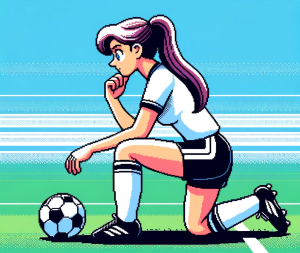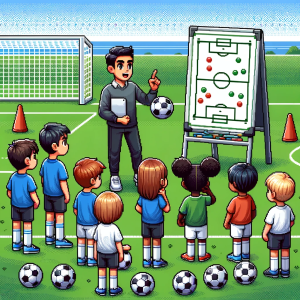
Why Some Talented Girls Never Get Seen
Picture this: a 14-year-old midfielder in rural Michigan wakes up at 4 a.m. for a six-hour drive to a weekend tournament—just for a scout to see her play 45 minutes. Across the country, another player in San Jose practices daily at a world-class facility funded by club sponsors. Both love soccer, but only one has a real shot at a Youth National Team (YNT) invite.
A new PLOS ONE study led by Matthew Andrew and colleagues shines a spotlight on why. Through interviews with 23 U.S. Soccer scouts, the research identifies four major environmental factors that quietly—but powerfully—shape which girls get identified for the Women’s Youth National Team (WYNT): inconsistent playing styles, geographic and socioeconomic barriers, limited access to talent pathways, and the uneven role of the U.S. Soccer Federation (USSF).
This research matters because the U.S. remains the global benchmark in women’s soccer—yet its youth system still leaks talent.
The U.S. Has No Single “Way” of Playing
European clubs often talk about “DNA”—a clear identity that shapes every player from U10 to the pros. Spain’s tiki-taka, England’s possession-based build-up—these styles aren’t just branding; they’re teaching philosophies.
By contrast, the U.S. youth game is a patchwork. Scouts in the study described a “melting pot” of styles: indoor, small-field play in the Midwest; direct, athletic soccer in the South; and possession-focused play on the coasts
Without a unified national philosophy, even top coaches evaluate players through wildly different lenses. A defender prized in Texas for her grit might seem “too physical” to a scout raised on European models. The takeaway? U.S. Soccer’s recently launched “US Way” philosophy needs to go beyond slogans—it must anchor coaching education and evaluation criteria nationwide.
The High Cost of Being Seen
The study’s most sobering finding: you often need money to even get identified.
Families in elite girls’ leagues pay between $3,000 and $25,000 per year in club and travel fees. Scouts described countless talented players who “just can’t afford it.” Some drive six to ten hours for matches, juggling academics and fatigue.
This “pay-to-play” model filters the player pool toward families from wealthier, suburban backgrounds—a finding echoed by prior research on NWSL players’ hometowns. For a sport that prides itself on accessibility, it’s an uncomfortable truth: socioeconomic status may determine not just opportunity, but visibility.
Why Scouting Still Feels Like Guesswork
Even when players make it to the right stage, scouting itself is inconsistent. Many evaluations hinge on single-game performances—sometimes “45 minutes of play,” as one scout admitted. Context matters: a midfielder instructed to play defensively for her club might appear passive to an unfamiliar observer.
Scouts also acknowledged personal biases—each carries a “different lens” of what counts as talent. Without shared definitions, the process becomes more subjective than scientific.
The authors recommend developing a “shared mental model” among scouts and coaches: a common language for rating technical, tactical, and psychological qualities. Think of it as a playbook for evaluation—one that aligns national standards without crushing creativity.
Uneven Playing Fields: Geography and Coaching
Talent clusters in cities with strong soccer cultures and quality facilities. Players from smaller or colder states face fewer competitive matches, less year-round training, and lower visibility. Weather even shapes skill sets—players from northern states often master tight-space control from indoor training, while southern players develop physical explosiveness on full-sized pitches.
Add to that the uneven distribution of qualified coaches. Many of the “best coaches,” scouts said, gravitate toward older boys’ teams or senior squads. That leaves youth girls’ programs staffed by well-meaning but undertrained coaches—creating gaps at the most formative stages of development.
5 Takeaways for Coaches and Clubs
- Adopt a Common Language: Align evaluation terms and playing philosophies across regions to reduce bias and inconsistency.
- Map Your Talent Environment: Track where players come from—birthplace, travel demands, socioeconomic background—to identify gaps in access.
- Prioritize Long-Term Development: Focus less on short-term wins and more on skill, creativity, and tactical intelligence.
- Lower the Cost Barrier: Explore fee waivers, travel stipends, or community-backed models to expand inclusion.
- Invest in Grassroots Coaching: Support continued education for youth coaches, especially in underserved areas.
Your Turn to Kick It Off
The future of U.S. women’s soccer doesn’t hinge on finding the next star—it depends on finding the ones we keep missing.
How can local clubs reduce cost barriers while maintaining quality? Should U.S. Soccer standardize a national playing identity—or celebrate regional diversity? And what role should college soccer play in bridging the development gap?
Share your thoughts below—or tag your favorite coach or club in this discussion.


